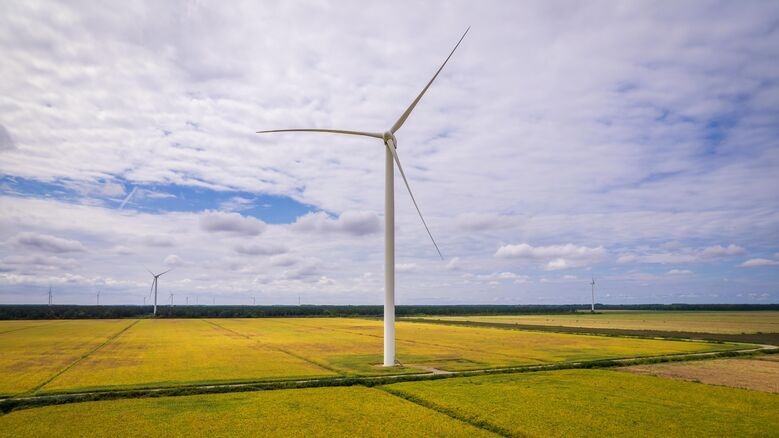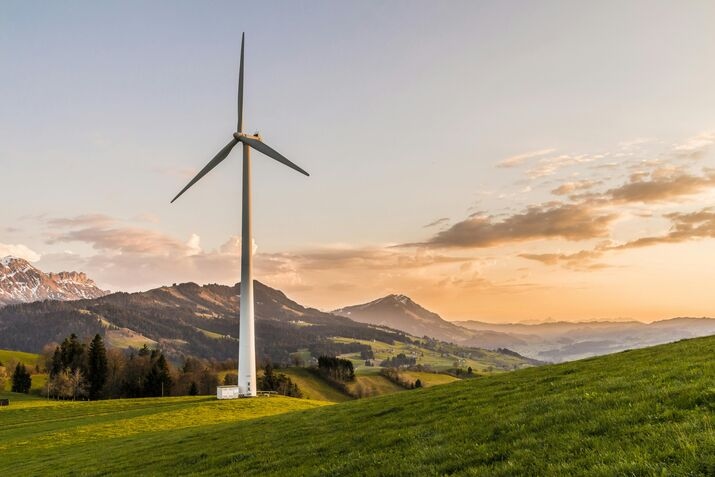With the climate crisis bringing environmental concerns to the foreground, the US has truly never given green energy solutions more attention. These sustainable technologies serve as better and cleaner alternatives to fossil fuels. Therefore, they are crucial in curbing the carbon footprint of the country.
Thus, in the US, renewables are now becoming an ever-increasing phenomenon, from homeowners wanting lower utility bills to companies working toward sustainability. In this blog, we will discuss what green energy solutions are, why they matter, which types are popular in the USA, and how you can benefit from them today.
What Are Green Energy Solutions?
In simple terms, green energy solutions refer to technologies that produce power from renewable and environmentally friendly resources. These sources of energy do not emit harmful greenhouse gases into the atmosphere as fossil fuels do. Hence, they provide a cleaner way that can be sustained to fulfill energy requirements.
Some of the commonly known green energies are:
- Solar energy
- Wind energy
- Hydropower
- Geothermal energy
- Biomass energy
Together, these solutions not only reduce pollution and save natural resources but also actively promote the long-term health of the environment.
Why Green Energy Solutions Matter in the USA
The U. S. has been one of the top energy consumers globally. Much of this energy has traditionally been sourced from oil, coal, and natural gas. But from a point of view of sustainability, that model is no longer tenable. In brief, these are points against which green energy solutions come into mowgliness:
- Combating Climate Change
Increasing temperatures and instances of intense weather events are becoming more common. These are glaring indications of climate change. On the flip side, green energy cuts down carbon emissions substantially and places the brake on further environmental degradation.
- Public Health Concerns
Those emissions, coming from fossil fuels, are thought to be prejudicial to the health of individuals, causing such things as asthma and heart attacks. But with cleaner air emanating from renewable energy sources, the health of people is better, and medical costs are reduced.
- Energy Independence
The United States imports much of its energy today. However, an increase in renewable energy production and use will decrease dependence on foreign-produced energy. This will, in turn, strengthen national security apart from stabilizing energy prices.
- Job Creation and Economic Growth
The clean energy industry in the U. S. is growing at a rapid pace. There are many jobs it offers for installing solar panels, maintaining wind turbines, and manufacturing electric vehicles, among a few others. Most certainly, the more jobs it creates, the more influence it has on economic growth.
Popular Green Energy Solutions in the US
- Solar Power
Solar is the most accessible and widely adopted green energy solution in the U. S. It allows residences and businesses to make electricity by using rooftop solar panels, thereby leveraging sunlight. These days, solar installations are made more affordable than ever through federal and state tax incentives.
Recent technological advances in battery storage are allowing solar system owners to store excess energy generated during the day for use at night or on cloudy days.
- Wind Power
Wind power is undergoing rapid expansion throughout the country. Onshore wind farms, for instance, in the states of Texas, Iowa, and Oklahoma, generate huge quantities of electricity, while offshore wind projects along the East Coast are springing to life.
- Hydropower
Hydropower generates electricity from flowing water. Though the construction of new dams is limited due to environmental concerns, the modernization of hydroelectric systems has greatly enhanced their functioning. Thus, hydropower keeps its important role in the U. S. energy mix.
- Geothermal Energy
Geothermal energy generates electricity and heat from the warmth stored in the Earth. It is mainly used in California and Nevada, but this low-emission, reliable power is ready to grow with investment.
- Biomass Energy
Biomass energy produces combustible fuels from organic matter like agricultural waste, wood, and animal manure. If managed correctly, biomass is a carbon-neutral energy form. Moreover, it also serves to reduce landfill.

Benefits of Green Energy Solutions to Homeowners
- Lower Monthly Energy Bills
Solar panel systems or green energy suppliers attract homeowners with the best energy bargains. Moreover, over time, this evolving arrangement can drastically reduce their utility bills.
- Government Incentives
To spur adoption, the U.S. government offers a plethora of tax credits, along with rebates from various states. As a result, such incentives make green energy more affordable for many homeowners today.
- Major Appreciation of Property Value
Energy-efficient homes experience lots of demand. Therefore, any property that represents its investment in solar power and/or eco-friendly renovations pictures faster acceptance and a higher price.
- More Independence
When you generate your own electricity, this cuts away dependency on the grid and hence protects you from energy price hikes or blackouts.
How Green Energy Helps U. S. Businesses
- Meeting Sustainability Goals
Today, a vast number of companies actively aim to reduce their carbon footprint. Consequently, green energy helps them effectively meet corporate social responsibility (CSR) and environmental, social, and governance (ESG) goals.
- Long-Term Cost Savings
Though installation of solar panels or wind systems requires an initial investment, the savings in return are immense. In addition, many states also offer commercial energy credits.
- Enhance Brand Reputation
Consumers will most likely support businesses committed to environmental responsibility. Therefore, the adoption of green energy solutions will improve the image of these companies and provide them with a competitive advantage.
U. S. Government Support for Green Energy
The US government has given rise to the following programs to spur the adoption of renewable energies:
- Investment Tax Credit (ITC): Solar installations can benefit from a 30% tax credit.
- Production Tax Credit (PTC): Encourages wind and solar generation on a per-kWh basis.
- Net Metering: Homeowners can sell back to the grid any excess generation from solar systems installed on their property.
- Renewable Portfolio Standards (RPS): It is the requirement imposed on utilities in many states to step up their renewable energy use.
Together, these programs jointly deliver valuable incentives, which in turn make greener options both more accessible and more profitable to adopt.
Green Energy in the USA: Overcoming the Challenges
This list really does include the challenges and barriers faced by green energy, although it consists of many positives:
- Initial High Cost
The upfront cost is high; despite that, with tax credits and financing packages, renewable energy is becoming accessible.
- Intermittency
Solar and wind energy are dependent on the weather; however, fortunately, advances in battery storage and smart grids are effectively helping to tackle this issue.
- Grid Integration
Grid integration of distributed energy sources requires an update of the present electrical grid. Fortunately, this is, and should continue to be, a work in progress.
The Future of Green Energy in the USA
Grid integration of distributed energy sources requires a comprehensive update of the present electrical grid. Fortunately, this crucial process is already underway, and, importantly, it should continue to be a work in progress to effectively meet future energy demands and ensure system reliability.
Technologies like hydrogen fuel, next-generation battery systems, and AI-powered energy management are set to disrupt the sector even more. Furthermore, green choices are being demanded by consumers, so companies and legislators now have to respond.
Final Thoughts
Green energy solutions are no longer a concept of the distant future; instead, they are a reality of today. Whether being a homeowner, business manager, or policymaker, clear advantages come with becoming green.
By making the switch, you’ll save money, while also helping the environment, and moreover, contribute to a healthier and more resilient energy grid in the U.S.
